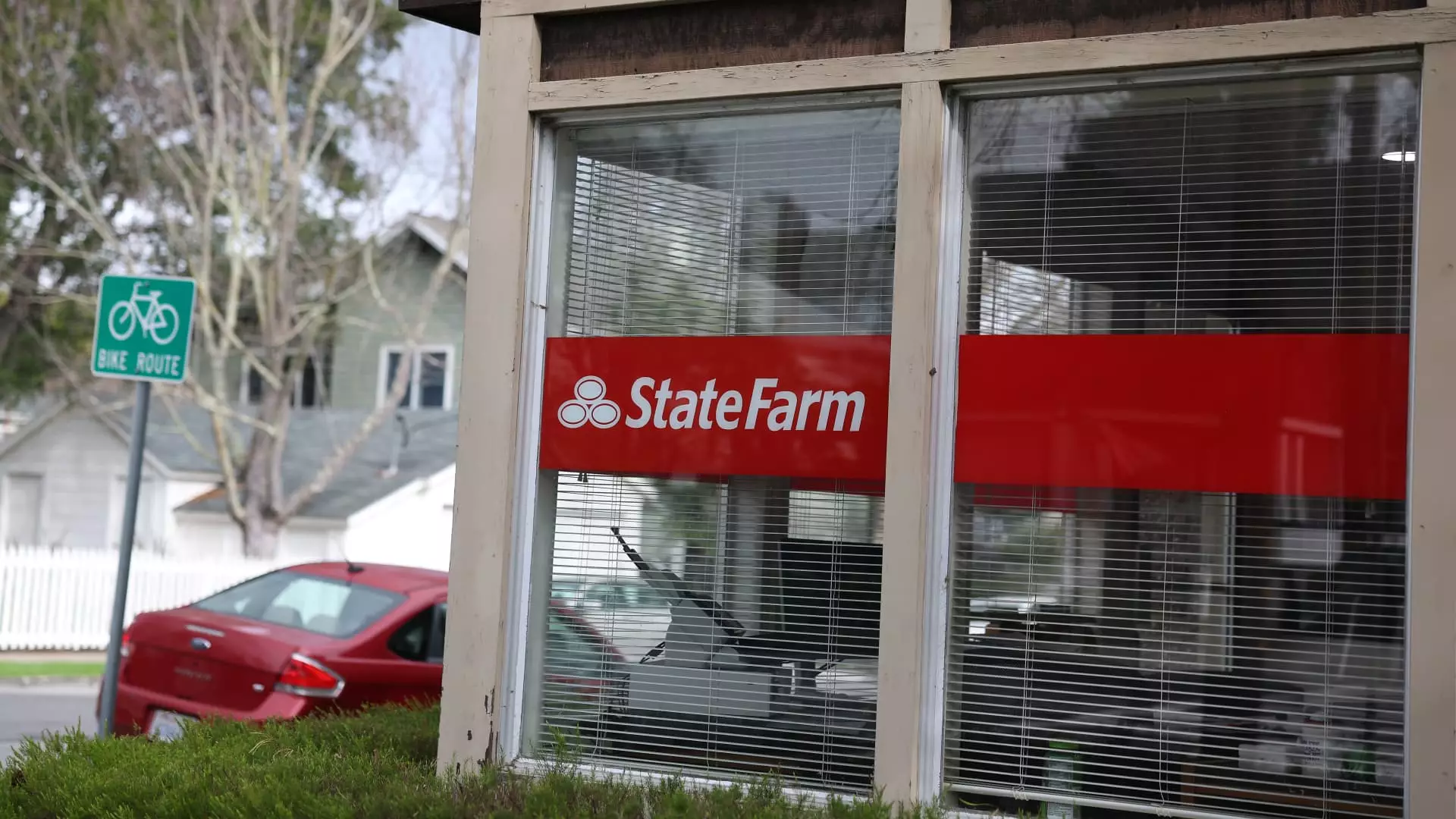In a landscape ravaged by unprecedented natural disasters, State Farm’s current predicament reveals a critical junction for homeowners and insurers alike in California. The largest property insurer in the state is pleading for an emergency rate hike in the wake of the catastrophic Los Angeles wildfires—wildfires that have left a trail of destruction with damages estimated between $250 billion and $275 billion. These staggering figures don’t merely signal a financial crisis for the insurer but hint at the tumultuous waves that could engulf millions of Californians if decisive actions aren’t taken.
As State Farm seeks a 17% increase for homeowners and a staggering 38% for rental property insurance, it’s essential to question the balance between corporate survival and consumer protection. On the surface, the narrative seems clear; the company is ardently working to secure its financial footing, but beneath such a façade lies a deeper issue regarding the sustainability of insurance markets in California’s rapidly changing climate.
A Titanic Parable: The Looming Iceberg
The analogy comparing State Farm’s situation to that of the Titanic, navigated by Attorney Nikki McKennedy, carries ominous weight. The impending financial meltdown looms with alarming clarity. As insurers like State Farm continue sinking in a sea of increasing claims and stagnant premiums, the fiscal iceberg is indeed in sight. With weak underwriting performance persisting for years, it prompts a sobering thought: at what point do insurers’ problems become homeowners’ catastrophic burdens?
The repercussions of irresponsibly managed risk cannot be understated. In their quest for financial recovery, insurers may disproportionately load their financial mismanagement onto policyholders. With nearly 3 million California homeowners under State Farm’s coverage, the potential fallout affects more than just corporate bottom lines; it puts the livelihood and security of countless residents in jeopardy.
Echoes of Reason and Resistance
Echoes of dissent fill the halls of the ongoing hearings where advocates for consumer protection challenge the legitimacy of the insurer’s requests. Groups like Consumer Watchdog voice concerns that State Farm’s proposed hike lacks sufficient justification, highlighting how its initial ask of 22% morphed to 17%. Is this a well-thought-out strategy for recovery or merely a desperate grasp at financial stability?
William Pletcher, the lead attorney for Consumer Watchdog, raises an important point: if the increase is not soundly backed by facts and legitimate reasoning, who will bear the repercussions when State Farm’s precarious recovery plan forces homeowners to bear the brunt of misguided financial strategies? The state’s insurance commissioner, Ricardo Lara, seems pained to balance regulatory caution with the urgent needs of the insurance market, yet his hesitance to greenlight significant hikes reflects the systemic instability of California’s insurance landscape.
A Shift Towards Sustainability
Despite the crisis unfolding in real time, some steps towards reform are being taken, shaped by California’s “Sustainable Insurance Strategy.” This policy approach opens the door for insurers to align their rates more accurately with disaster risks, allowing for more sustainable underwriting practices. Economists like David Appel, testifying at the recent hearings, point toward optimism, maintaining that adjusted rates could avert financial collapse for entities like State Farm and, by extension, for homeowners as well.
It’s a formidable balancing act that the state must perform. A regulatory framework that protects consumer interests cannot ignore the insistent call of insurers for more reasonable compensation for the risk they are undertaking. This is not merely an economic adjustment; it’s a fundamental restructuring of how risk, unpredictability, and climate impact are assessed and priced in insurance models.
A Path Forward Under Uncertainty
Yet, amid the conversations of reform and urgent appeals for rate hikes, a persistent layer of uncertainty lingers. If industries cannot adapt to the realities of increasing environmental disasters, no amount of rate increases will salvage a sector on the brink of collapse. Right now, State Farm’s cry for help epitomizes a broader narrative—the insurance industry must evolve in the face of climate change, or it risks becoming another statistic in an already staggering list of casualties in California’s fight against natural disasters.
The situation is dire and the stakes are complex. Insurers, regulators, and consumers must work collaboratively to ensure a more resilient insurance structure that can withstand the future storms—both literally and figuratively. Whether State Farm’s request will pave the way for sustainable recovery or merely mask deeper systemic issues remains to be seen. But if California is to navigate through these impending financial storms, the voices of reason and demand for accountability must resonate louder than ever before.


Leave a Reply